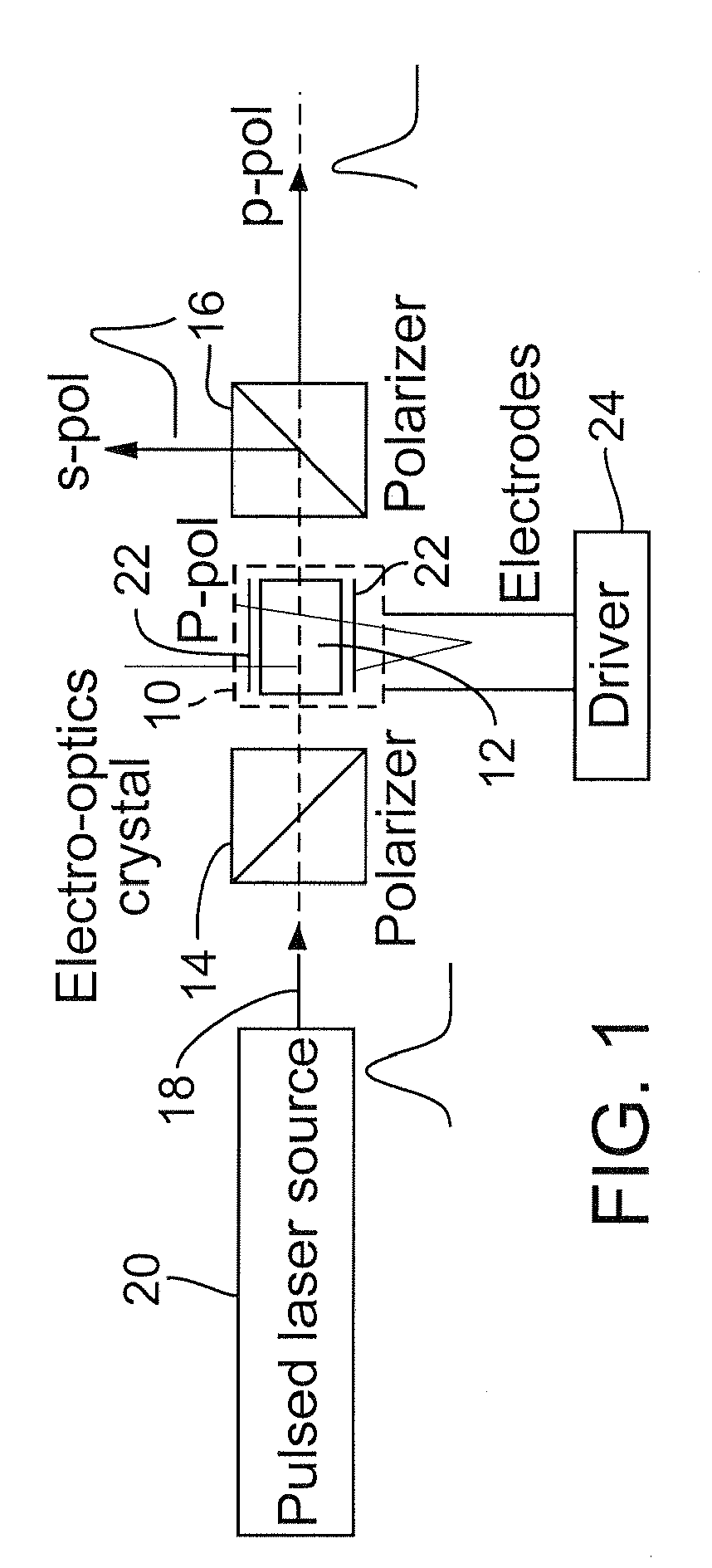Laser micromachining using programmable pulse shapes
a technology of programmable pulses and micro-machining, which is applied in the direction of manufacturing tools, instruments, optics, etc., can solve the problems of ic reliability problems, limit the option of having adjustable pulse width and pulse shape, and excess removal, so as to reduce risk, improve throughput, and reduce damage to pcb copper pads
- Summary
- Abstract
- Description
- Claims
- Application Information
AI Technical Summary
Benefits of technology
Problems solved by technology
Method used
Image
Examples
Embodiment Construction
[0026]FIG. 1 shows an electro-optical modulator 10 that is implemented in a number of laser pulse slicing system embodiments described below to produce tailored laser pulse output. Electro-optical modulator 10 includes an electro-optical crystal 12 cell that is positioned between light polarizing devices (polarizers) 14 and 16 and receives a beam of laser pulses 18 emitted by a pulsed laser source 20. Electro-optical crystal cell 12 has electrodes 22 to which drive output signals of driver circuitry 24 are applied to contribute to shaping of incident laser pulses 18. Laser source 20 can be any pulsed laser emitting a laser pulse of a pulse width within a range of a few nanoseconds to 100 ns. Electro-optical crystal cell 12 can be made of KDP, KD*P, ADP, AD*P, RTP, RTA, BBO, LiNbO3, or other electro-optical materials. One example of a suitable electro-optical crystal cell 12 is a LightGate 4 BBO Pockels cell manufactured by Cleveland Crystals, Inc., Highland Heights, Ohio. The LightG...
PUM
| Property | Measurement | Unit |
|---|---|---|
| Electrical conductivity | aaaaa | aaaaa |
| Power | aaaaa | aaaaa |
| Electrical resistance | aaaaa | aaaaa |
Abstract
Description
Claims
Application Information
 Login to View More
Login to View More - R&D
- Intellectual Property
- Life Sciences
- Materials
- Tech Scout
- Unparalleled Data Quality
- Higher Quality Content
- 60% Fewer Hallucinations
Browse by: Latest US Patents, China's latest patents, Technical Efficacy Thesaurus, Application Domain, Technology Topic, Popular Technical Reports.
© 2025 PatSnap. All rights reserved.Legal|Privacy policy|Modern Slavery Act Transparency Statement|Sitemap|About US| Contact US: help@patsnap.com



